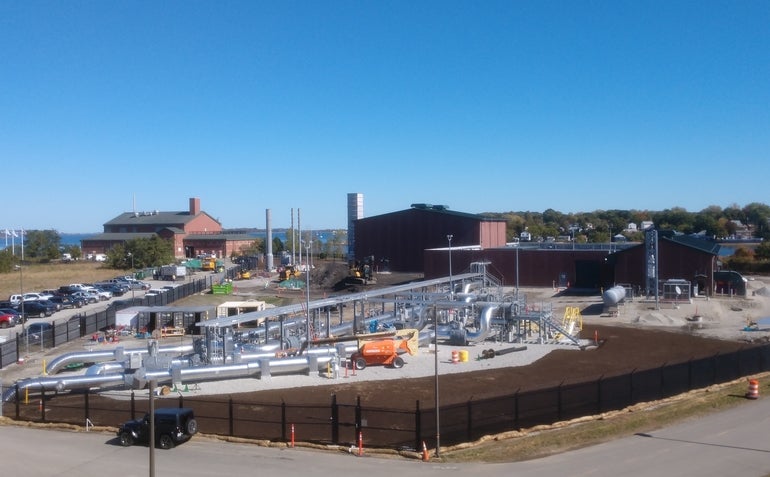Frigid temperatures expected to persist through the week have New Englanders kicking the thermostat up a few degrees, and that means the power grid is more reliant than usual on dirtier fuels like oil.
Oil is generally a small part of the New England grid’s resource mix. At noon Saturday, before temperatures plunged into the teens for several days, oil was being used to generate about 164 megawatts of power, or about 1.12% of the regional grid’s total. The resource mix is generally dominated by natural gas (36% Saturday), imports (24.4% Saturday) and nuclear (23% Saturday).
But as the cold set in and the demand for natural gas for heating rose, so too did the price of the gas. And with natural gas now a more expensive option, some power generators made the switch to burning cheaper oil, officials at grid operator ISO-New England said. Data from ISO-NE shows oil’s place in the resource mix growing starting Sunday and ramping up through Monday.
As of about 10:30 a.m. Tuesday, oil was the leading fuel in the ISO-NE resource mix, accounting for 5,427 MW or 30% of power generation, followed by natural gas at 22.7% and nuclear at 18.5%. And coal reappeared in the mix, being relied upon for 291 MW or 1.6% of the total. The amount of power coming from imports and renewables dropped considerably — from 24.4% and 11.7% respectively on Saturday to 14.6% and 6.9% respectively on Tuesday.
As of about 9 a.m. Wednesday morning, natural gas was back on top of the resource mix, accounting for 37% of the region’s power generation. Oil was still second on the list, at 24.3%. And coal was still in the mix, being used for 296 MW or 1.5% of the power generation total.
While it may not have been producing the largest amount of the region’s power, oil was still producing the greatest share of carbon emissions from the ISO-NE grid as of Wednesday morning. Oil-fueled power generation led to 69.08 metric tons of carbon dioxide emissions every minute as of 9 a.m. Wednesday, about 52% of the grid’s total emissions, according to ISO-NE data. Natural gas, meanwhile, contributed 46.63 metric tons of CO2 emission each minute, about 35 percent of the grid’s total.
With demand for natural gas to heat homes and businesses high during a frigid stretch between Christmas 2017 and Jan. 9, 2018, Massachusetts power generators burned two million barrels of oil — more than twice the amount of oil they burned during all of 2016 — in order to produce sufficient electricity, Energy and Environment Secretary Matthew Beaton told lawmakers in 2018.
“Economically, this is a disaster for us in New England. Equally as important, environmentally the emissions and the profiles of what occurred in this timeframe is nothing but a disaster,” Beaton said at the time.

